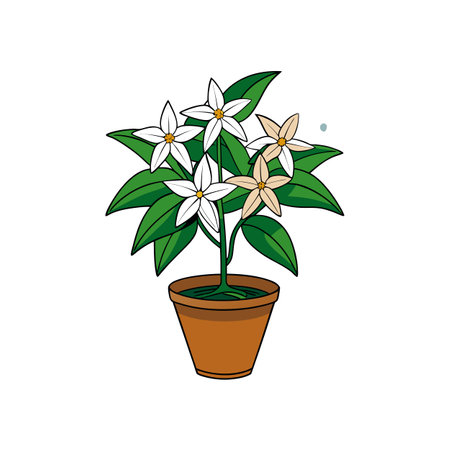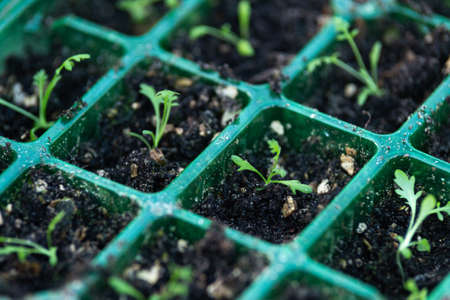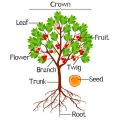Understanding Winter Dormancy in Plants
As the chill of winter settles across North America, both native and garden plants enter a fascinating phase known as winter dormancy. This natural process is far more than a seasonal pause; it’s an essential adaptive strategy that allows plants to survive harsh environmental conditions. In regions where winters bring freezing temperatures, shorter daylight hours, and reduced water availability, dormancy acts as a built-in survival mechanism. During this period, plants slow their metabolic activities, conserving energy and resources until favorable conditions return. For native species, this adaptation has evolved over thousands of years, enabling them to thrive despite the unpredictability of North American winters. Garden favorites—whether perennials, shrubs, or trees—rely on these same cues, signaling when to conserve energy and when to burst back into growth in spring. Understanding how dormancy works not only deepens our appreciation for the resilience of local ecosystems but also empowers gardeners to support their landscapes in environmentally conscious ways.
2. The Science Behind Dormancy
Winter dormancy in plants is a remarkable adaptation, grounded in both biochemical and physical processes that ensure survival through harsh conditions. As temperatures drop and daylight hours wane, plants undergo a series of physiological changes that prepare them for the winter months. This phase isn’t simply a “pause”; it’s an active transition shaped by evolutionary wisdom.
Hormonal Shifts: Nature’s Internal Clock
The onset of dormancy is largely regulated by plant hormones, particularly abscisic acid (ABA) and gibberellins. As fall approaches, ABA levels rise, signaling cells to slow down metabolism and conserve resources. At the same time, gibberellin production drops, curbing growth. This hormonal shift helps plants resist dehydration and damage from freezing.
Key Hormones Involved in Dormancy
| Hormone | Main Function During Dormancy |
|---|---|
| Abscisic Acid (ABA) | Promotes dormancy, inhibits growth, increases cold resistance |
| Gibberellins | Reduces during dormancy to halt active growth |
| Cytokinins | Decreases to limit cell division |
Cellular Slowdown: Conserving Energy for Spring Renewal
On a cellular level, metabolic activity in dormant plants slows dramatically. Chlorophyll breaks down, nutrient transport halts, and water content within cells is reduced to prevent ice formation that could rupture delicate membranes. These changes are not just about survival—they set the stage for robust growth once favorable conditions return.
Dormancy as a Blueprint for Resilience
This intricate dance of hormones and cellular adaptations is what empowers native trees like oaks and maples—and even your backyard perennials—to burst back to life when spring arrives. By understanding these natural rhythms, we can better support local plant life while honoring the cycles that sustain our ecosystems.

3. Climate Impacts and Regional Differences
Winter plant dormancy across the United States is shaped by dramatic regional climate differences, from the icy winters of the northern Great Plains to the relatively mild conditions in the Southeast. In colder northern states like Minnesota or Maine, plants experience prolonged periods of freezing temperatures and snow cover. These harsh conditions trigger deep dormancy, with trees such as maples and oaks halting growth entirely to conserve energy and protect themselves from frost damage. The length and severity of winter ensure that dormancy is not just a rest but a critical survival strategy.
Conversely, in southern states like Georgia or Texas, winter temperatures are much milder. Here, many native plants enter a lighter form of dormancy, often referred to as semi-dormancy. For example, Southern magnolias and live oaks may slow their growth but rarely stop it completely. The shorter and less intense chill periods mean these species can maintain some metabolic activity and even retain green foliage year-round. Gardeners in these regions may notice that plants bounce back into active growth much earlier than their northern counterparts.
In transitional zones—think the Mid-Atlantic or Midwest—plants must be adaptable. Unpredictable temperature swings can cause premature bud break or delay dormancy onset, sometimes resulting in frost damage when sudden cold snaps return. Native species have evolved to handle these fluctuations, but non-native ornamentals might struggle without extra protection.
Understanding your local climate’s impact on dormancy helps you choose resilient plant species and adopt regionally appropriate gardening practices. Supporting dormancy in colder climates may involve mulching for root insulation and minimizing late-season fertilization to prevent new growth before winter. In warmer areas, ensuring adequate moisture during dry spells and avoiding unnecessary pruning helps plants transition smoothly into and out of their rest phase.
4. Sustainable Practices to Support Dormant Plants
As winter sets in and plants enter their dormant phase, adopting eco-friendly gardening techniques is essential for both the health of your landscape and the planet. By supporting dormancy through sustainable actions, you help conserve resources and foster resilient plant life that will flourish come spring. Here are some key environmentally responsible practices to implement during the colder months:
Mulching: Nature’s Insulation
Mulching is a cornerstone of sustainable winter gardening. Organic mulch—such as shredded leaves, pine needles, or wood chips—provides a protective barrier over soil, conserving moisture, regulating temperature, and suppressing weed growth. This minimizes the need for chemical interventions and additional watering.
| Mulch Type | Eco-Benefits | How to Apply |
|---|---|---|
| Shredded Leaves | Reduces waste; enriches soil as it breaks down | Spread 2-3 inches around base of plants, avoiding stems |
| Pine Needles | Adds acidity; ideal for acid-loving plants | Apply a thin layer around shrubs and trees |
| Wood Chips | Suppresses weeds; retains moisture | Layer 2-4 inches over garden beds and paths |
Minimal Disturbance: Let Nature Rest
Avoid unnecessary pruning, digging, or raking during winter. Leaving plant debris like fallen leaves and old stems provides natural habitat for beneficial insects and helps insulate roots. This hands-off approach not only respects plant dormancy but also promotes biodiversity in your yard.
Key Minimal Disturbance Tips:
- Resist cutting back perennials until late winter or early spring.
- Leave ornamental grasses standing—they offer shelter for wildlife.
- Avoid compacting soil by walking on garden beds while soil is wet or frozen.
Water Conservation: Smart Winter Watering
While many regions in the U.S. experience ample winter precipitation, some areas remain dry. It’s important to water only when necessary to avoid overuse of this precious resource. Water deeply but infrequently, targeting the root zone and taking care not to create runoff or ice patches that can harm plants.
| Region | Watering Frequency (Winter) | Sustainable Tip |
|---|---|---|
| Northern States (Snowy) | Seldom needed if snow cover is present | Rely on snow insulation; avoid supplemental watering |
| Western States (Dry/Arid) | Once every 3-4 weeks if dry & above freezing | Water in morning to minimize evaporation & prevent ice formation at night |
| Southeast (Mild Winters) | If no rain for 2-3 weeks, check soil moisture before watering | Use soaker hoses to reduce runoff & evaporation loss |
Together Toward Greener Winters
By combining mulching, minimal disturbance, and mindful water use, you’re not just protecting your garden—you’re actively participating in a more sustainable American landscape. Supporting plant dormancy with these practices ensures healthier ecosystems and a thriving garden ready to burst into life when spring returns.
5. Common Winter Dormancy Myths Debunked
Even seasoned gardeners can fall for myths when it comes to overwintering plants. Let’s clear up some of the most common misconceptions and offer science-backed, eco-friendly tips for creating resilient, sustainable landscapes at home.
Myth 1: All Plants Need to Be Covered or Brought Indoors
Many people believe every plant must be sheltered from winter cold, but most native and well-adapted perennials are naturally equipped for dormancy. Overprotecting them can actually interrupt their natural cycles and make them more vulnerable to disease and pests come spring. Instead, select regionally appropriate species and trust their evolutionary resilience.
Myth 2: Deadheading and Heavy Pruning Are Essential Before Winter
While it might seem tidy to cut everything back, research shows that leaving seed heads and stems provides vital habitat for pollinators and beneficial insects through the winter months. These organic structures also help insulate root systems and minimize soil erosion, supporting a more biodiverse and climate-resilient yard.
Myth 3: Brown Leaves Signal Plant Death
Browning foliage during winter is often a sign of healthy dormancy, not demise. Many plants withdraw nutrients from leaves before dropping them as a survival strategy. Resist the urge to overwater or fertilize; patience pays off with renewed growth in spring.
Best Practices for Sustainable Overwintering
- Mulch with compost or shredded leaves to insulate roots while feeding the soil naturally
- Avoid chemical treatments that disrupt dormant cycles or harm overwintering insects
- Leave ornamental grasses and wildflower stalks standing until early spring cleanup
Embracing Nature’s Rhythm
The science of winter dormancy teaches us to work with nature, not against it. By debunking these myths and applying mindful stewardship, American gardeners can nurture healthier, more sustainable yards that thrive all year—benefiting local ecosystems while reducing waste and inputs.
6. Embracing Dormancy for Biodiversity
Supporting winter plant dormancy goes beyond the health of your garden—it’s a vital part of nurturing local biodiversity. During the colder months, many beneficial insects, pollinators, and small wildlife species seek shelter in fallen leaves, plant stems, and other natural debris. By resisting the urge to over-tidy your yard, you provide essential habitats for native bees, butterflies, ladybugs, and countless microorganisms that form the foundation of a resilient ecosystem.
Why Natural Debris Matters
Fallen leaves and plant materials act as a natural mulch, protecting soil from erosion and providing insulation against temperature fluctuations. More importantly, they create microhabitats that offer food and shelter for overwintering pollinators and wildlife. Insects such as solitary bees lay their eggs in hollow stems or under leaf litter, while birds may forage among the debris for seeds and hidden insects. Removing this organic matter too soon disrupts these crucial life cycles and diminishes your yard’s ecological value.
Practical Steps for Supporting Biodiversity
To encourage a thriving environment during winter dormancy, consider leaving some areas of your landscape undisturbed until late spring. Designate “wild zones” where leaves and plant stems remain untouched. If you must clear pathways or high-traffic spots, compost the debris locally instead of bagging it up for landfill. Avoid using pesticides or herbicides during this period, as these chemicals can harm hibernating insects and contaminate habitats.
Encouraging Community Stewardship
Embracing winter dormancy is also about fostering community awareness and stewardship. Share information with neighbors about the ecological benefits of leaving natural materials in place. Advocate for municipal practices that support pollinator-friendly environments in parks and public spaces. Small actions—like hanging signs explaining your “messy” garden—is intentional—can help shift cultural norms toward greater appreciation for urban wildlife and sustainability.
By viewing winter dormancy as an opportunity rather than an inconvenience, we actively contribute to healthier landscapes and more robust local ecosystems. Supporting biodiversity through simple acts like preserving leaf litter not only benefits plants but also sustains the web of life that depends on them throughout the year.


